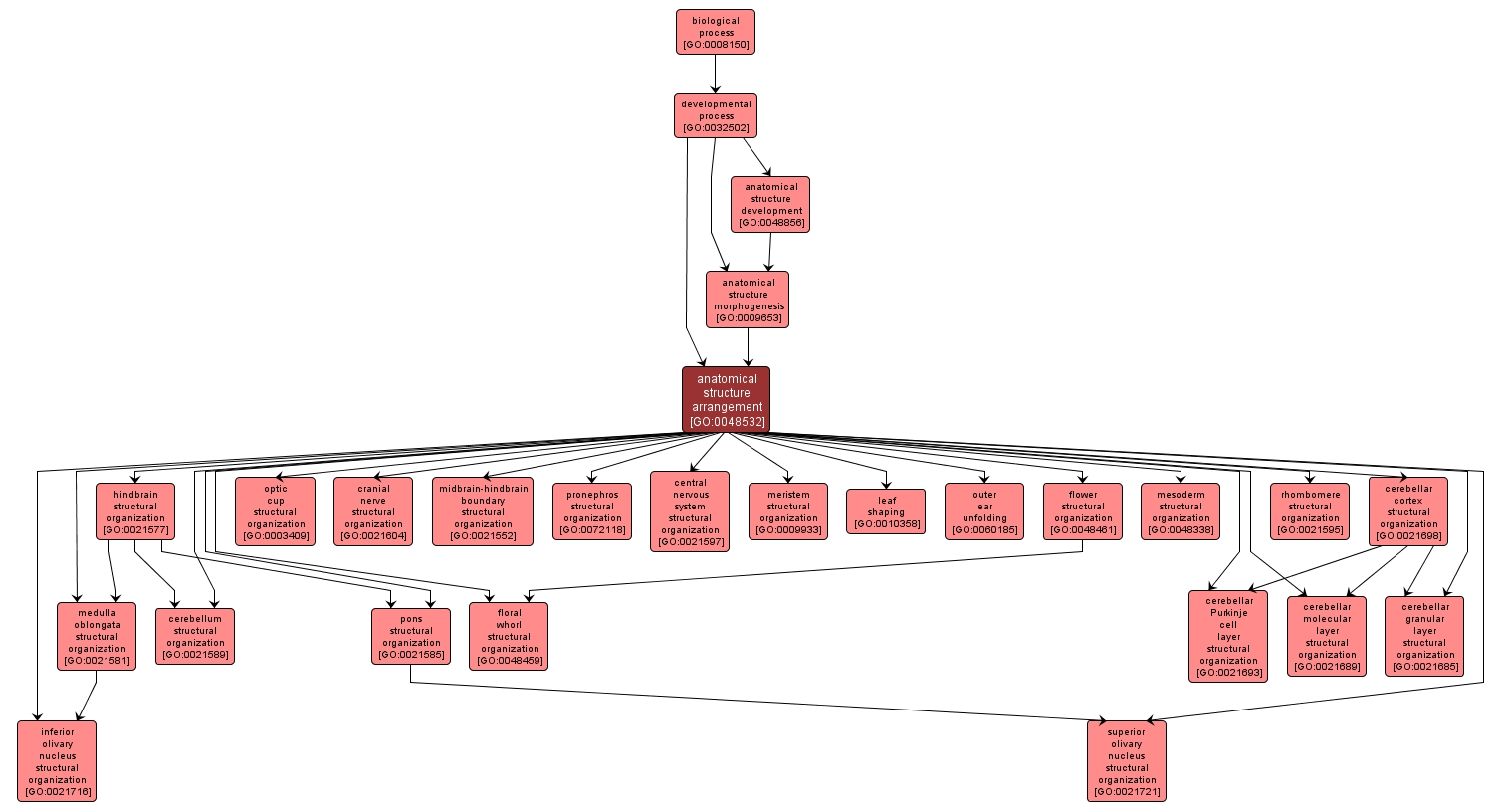GO TERM SUMMARY
|
| Name: |
anatomical structure arrangement |
| Acc: |
GO:0048532 |
| Aspect: |
Biological Process |
| Desc: |
The process that gives rise to the configuration of the constituent parts of an anatomical structure. This process pertains to the physical shaping of a rudimentary structure. Anatomical structures can be macroscopic such as a carpel, or microscopic such as an acrosome. |
Synonyms:
- organization of an anatomical structure
- structural organization
- anatomical structure organization
- anatomical structure structural organization
|
|

|
INTERACTIVE GO GRAPH
|














